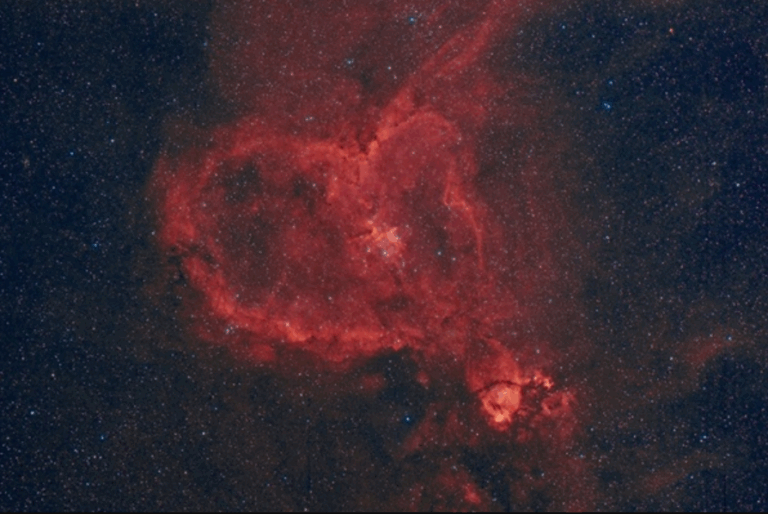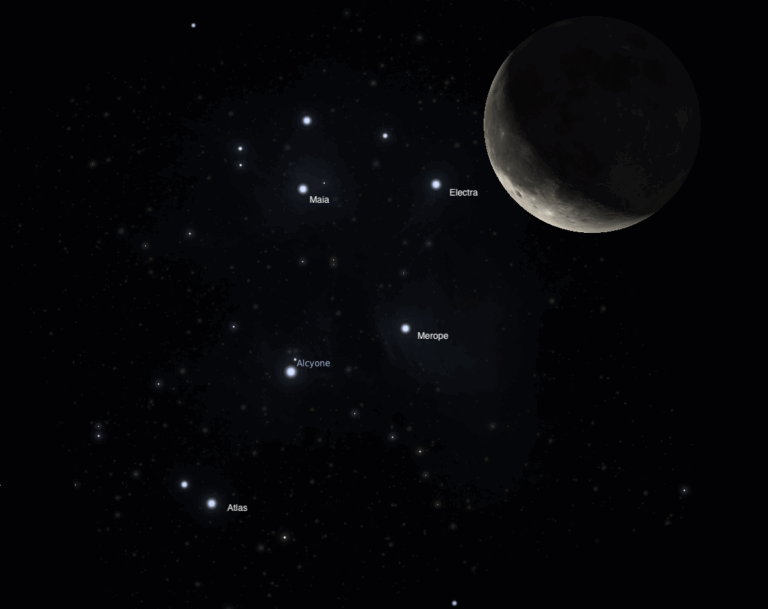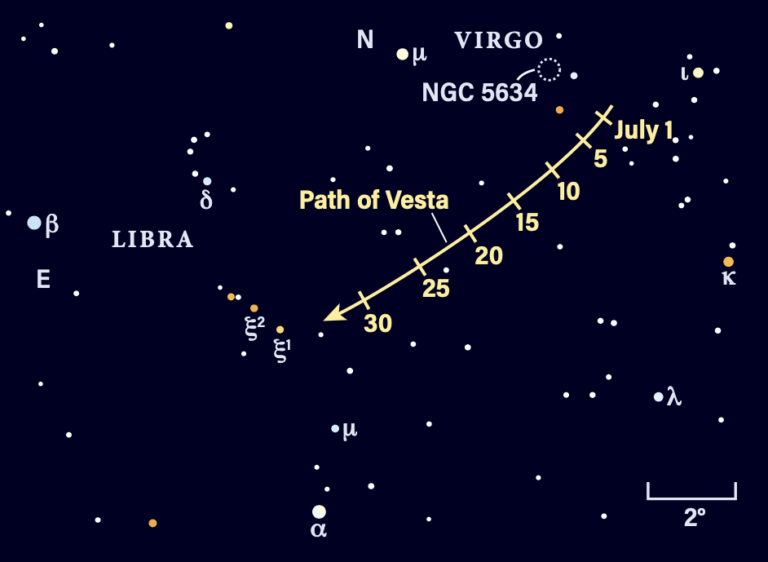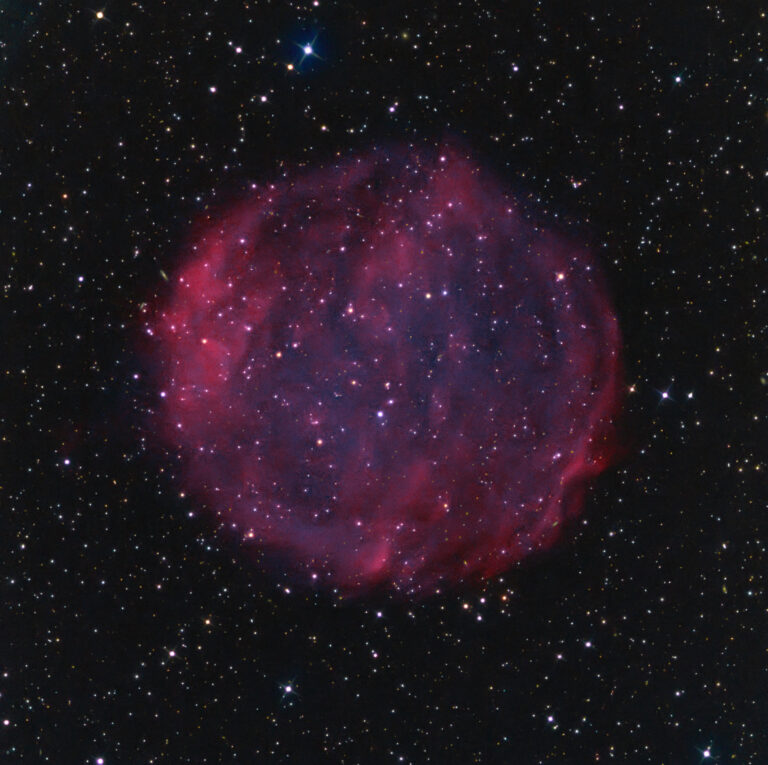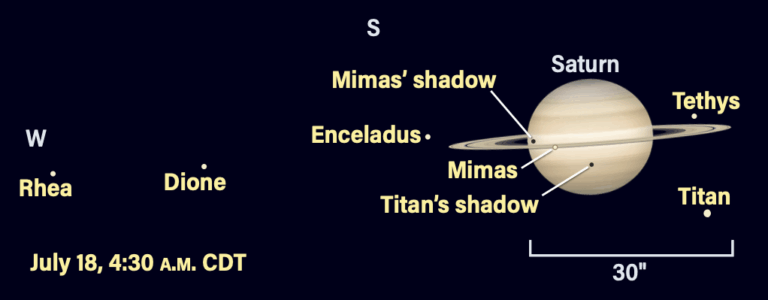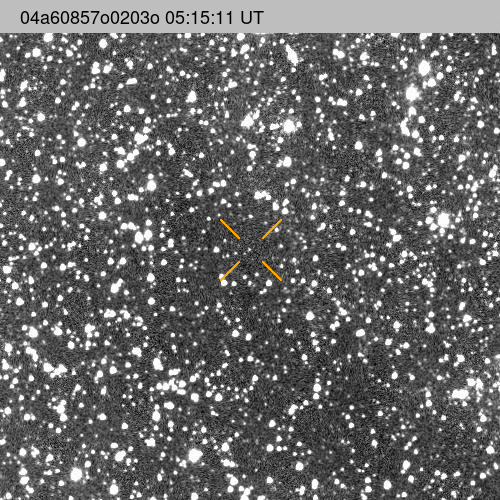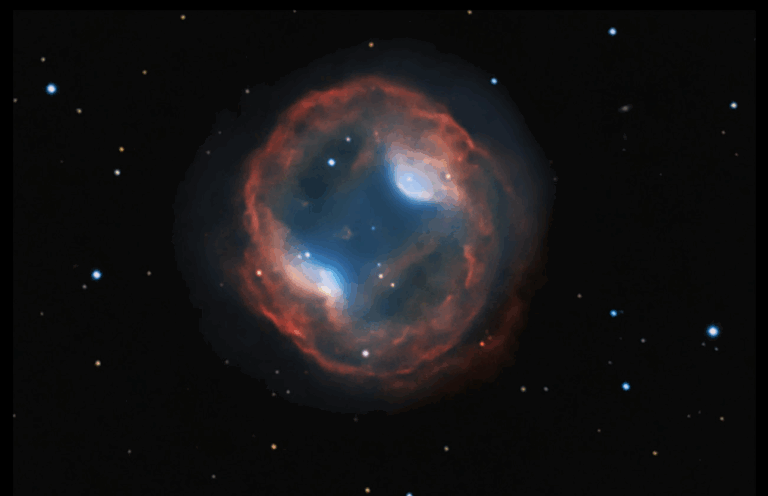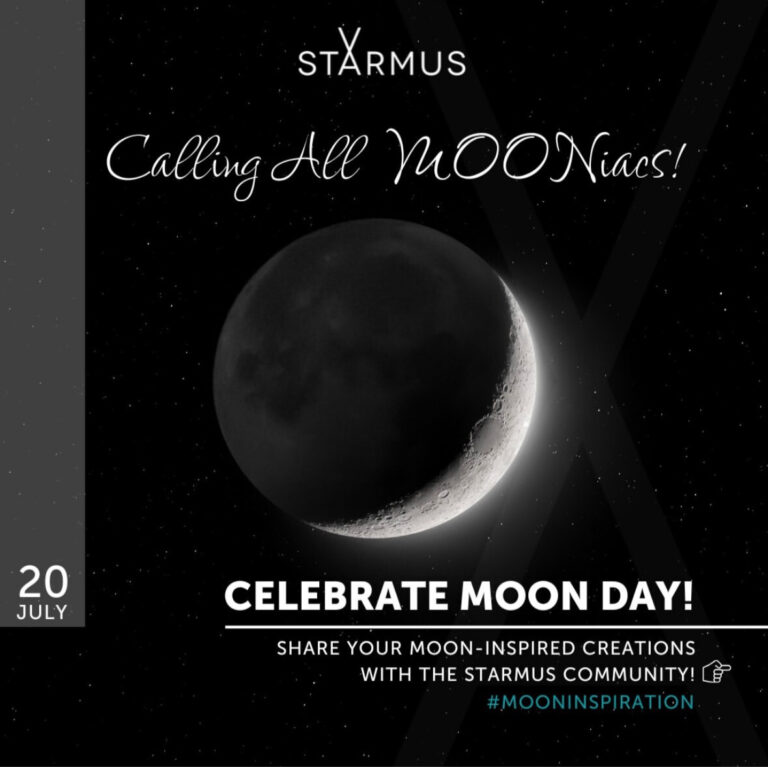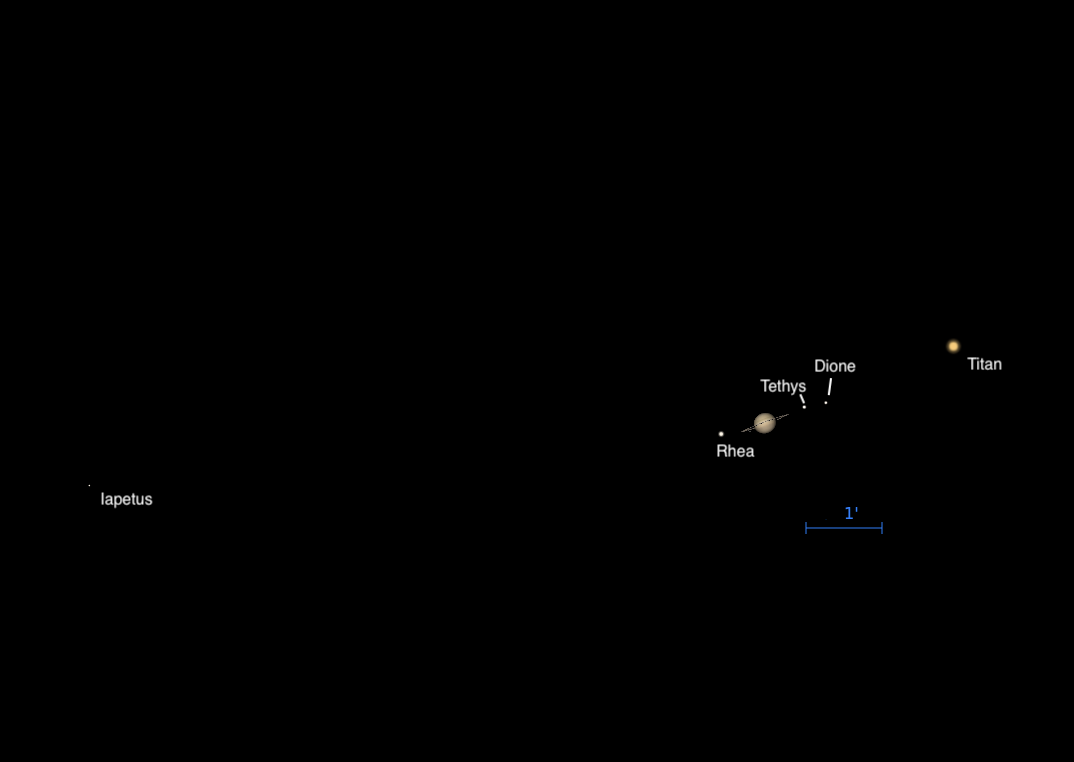
Key Takeaways:
- Iapetus, Saturn's moon, is visible near Saturn in the early morning sky.
- Saturn is easily located as the brightest point of light in the Circlet of Pisces.
- Titan, Saturn's largest moon, is also visible near Saturn, but brighter than Iapetus.
- Other Saturnian moons, Rhea, Tethys, and Dione, are also visible near Saturn.
Saturn’s tidally locked, two-toned moon Iapetus reaches eastern elongation today, standing a full 9′ east of Saturn. The moon appears faintest at eastern elongation, when its darker hemisphere is turned toward us and it glows a faint 12th magnitude. However, without our Moon lighting the early-morning sky, you might try to spot faint Iapetus — along with several other members of Saturn’s brood.
Try around 4 A.M. local daylight time, as Saturn is heading toward its highest point in the sky but the background remains dark. At this time, Saturn is some 40° high in the south, near the Circlet of Pisces. The planet is the brightest point of light in the sky there, making it easy to find and center in your scope. Through the eyepiece, you’ll see that Saturn’s disk spans 18.5”, while its rings stretch nearly 43” from end to end.
About 2.5’ to Saturn’s west, you’ll see its brightest moon, mid-8th-magnitude Titan. Iapetus sits more than three times this distance to Saturn’s east, and glows some four magnitudes fainter. Closer to the planet are 10th-magnitude Rhea, Tethys, and Dione; Rhea is just east of the edge of the rings, while Tethys and Dione are west of them, with the former closer to the planet than the latter.
Sunrise: 5:49 A.M.
Sunset: 8:23 P.M.
Moonrise: 2:02 A.M.
Moonset: 6:11 P.M.
Moon Phase: Waning crescent (12%)
*Times for sunrise, sunset, moonrise, and moonset are given in local time from 40° N 90° W. The Moon’s illumination is given at 12 P.M. local time from the same location.
For a look ahead at more upcoming sky events, check out our full Sky This Week column.

